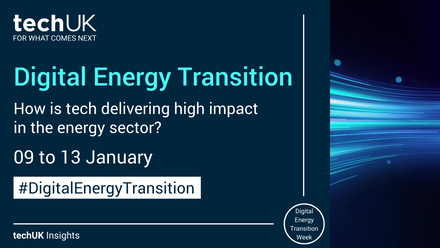Evidence to House of Lords - Delivering Great Britain’s electricity grid infrastructure - Industry and Regulators Committee
On 25 February, techUK gave evidence to the House of Lords Industry and Regulators Committee.
On 4 June, the committee published its report - Power Struggle: Delivering Great Britain’s Electricity Grid Infrastructure.
The Committee's report underscores the urgent need for a coordinated, cross-sectoral approach to modernising the UK's grid infrastructure. Key findings highlight the challenges in meeting the 2030 clean power target, the necessity for strategic spatial energy planning, and the importance of prioritising demand-side infrastructure, including data centres.
We focused on the critical role of data centres in the UK's digital economy and the need for their prioritisation in energy planning. Parts of our evidence are included within the report.
Key Messages
The Committee delivers a clear message: Great Britain’s electricity grid is not currently equipped to support the nation’s clean energy transition or digital ambitions. Without urgent and systemic change, grid capacity and governance constraints will continue to undermine net zero delivery, energy security, and economic growth.
The report identifies several interrelated structural failures:
- The grid is a critical bottleneck: More than 1,000 energy projects—totalling over 600 GW—are currently in the connection queue. Developers face waits of up to 15 years, stalling investment across energy, industry, and digital infrastructure.
- Planning delays and local capacity issues: Electricity transmission infrastructure can take 14 years from planning to operation, with local authorities lacking the expertise and resources to handle increasingly complex applications.
- Governance is fragmented: No single entity has full oversight of end-to-end grid development. The ESO, Ofgem, DESNZ, and the Future System Operator (FUSO) all play parts, but without a unified strategy or accountability.
- Demand-side infrastructure is underprioritised: Projects such as data centres, electrified transport, and hydrogen production are not adequately considered in grid planning, despite their central role in future economic and digital activity.
- A lack of long-term visibility: Investors and developers lack reliable data on grid capacity, availability, and connection timelines, making it difficult to plan, finance, or scale up critical infrastructure.
Committee Recommendations
The Committee makes ten formal recommendations.
- Accelerate Grid Infrastructure Delivery
Government should treat grid modernisation as a national priority, expediting planning processes and supporting faster build-out of transmission infrastructure. - Develop the Strategic Spatial Energy Plan (SSEP)
NESO must produce a fully integrated long-term spatial plan to identify where grid investment is most urgently needed, and this plan must include demand-side infrastructure (not just generation). - Introduce a Prioritisation Framework for Grid Connections
The current first-come-first-served model must be replaced with one that reflects project readiness and national strategic value including digital infrastructure. - Clarify Roles and Accountability
The FUSO and Ofgem should have clearly defined and complementary roles in leading long-term planning, system design, and delivery. - Improve Local Planning Capacity
Government must provide funding and guidance to enhance the technical capabilities of local authorities to handle complex energy infrastructure proposals. - Enhance Visibility and Transparency
Ofgem and ESO should improve data sharing to give developers, investors, and demand-side users a better understanding of grid constraints, capacity, and timelines.
Electricity Market Reform and Zonal Pricing
- The report favours introducing zonal pricing to encourage closer location of generation and demand, reducing the need for extensive grid infrastructure.
- Zonal pricing and reformed transmission network charges should enable better use of existing grid capacity and lower electricity costs, provided the transition is managed well.
- If the Government introduces zonal pricing, it must address potential investor uncertainty and provide clarity to encourage necessary investment.
- The Government should publish an assessment of the impacts of zonal pricing on generators and major consumers unable to relocate, including considerations for transitional support.
Grid Connection
- The Government should clarify whether it intends to prioritise electricity grid connections for strategically important sectors or businesses as part of the Industrial Strategy. If so, it should provide details on the mechanism and criteria.
Land Rights and Consents
- The Government should complete its review of land rights and consents for electricity network infrastructure, ensuring that processes are streamlined to facilitate timely project delivery.
Join our Data Centre Energy Group
The Data Centres Energy Working Group is a cross-sector forum focused on ensuring that the UK’s evolving energy policy and infrastructure planning effectively supports the rapid growth and sustainability of data centres. The group engages directly with key stakeholders including NESO, Ofgem, and the Department for Energy Security and Net Zero (DESNZ), contributing to major initiatives such as grid connection reform, the Strategic Spatial Energy Plan (SSEP), and upcoming Regional Energy Strategic Plans.
Its purpose is to advocate for the timely provision of energy infrastructure, shape policies that enable secure and low-carbon power supply for data centres, and coordinate industry input into national and regional planning processes to ensure future energy systems can meet the digital sector’s needs. This WG will engage directly with Government and NESO.
*This WG is only open to Data Centres and their supply chain. Register here.








